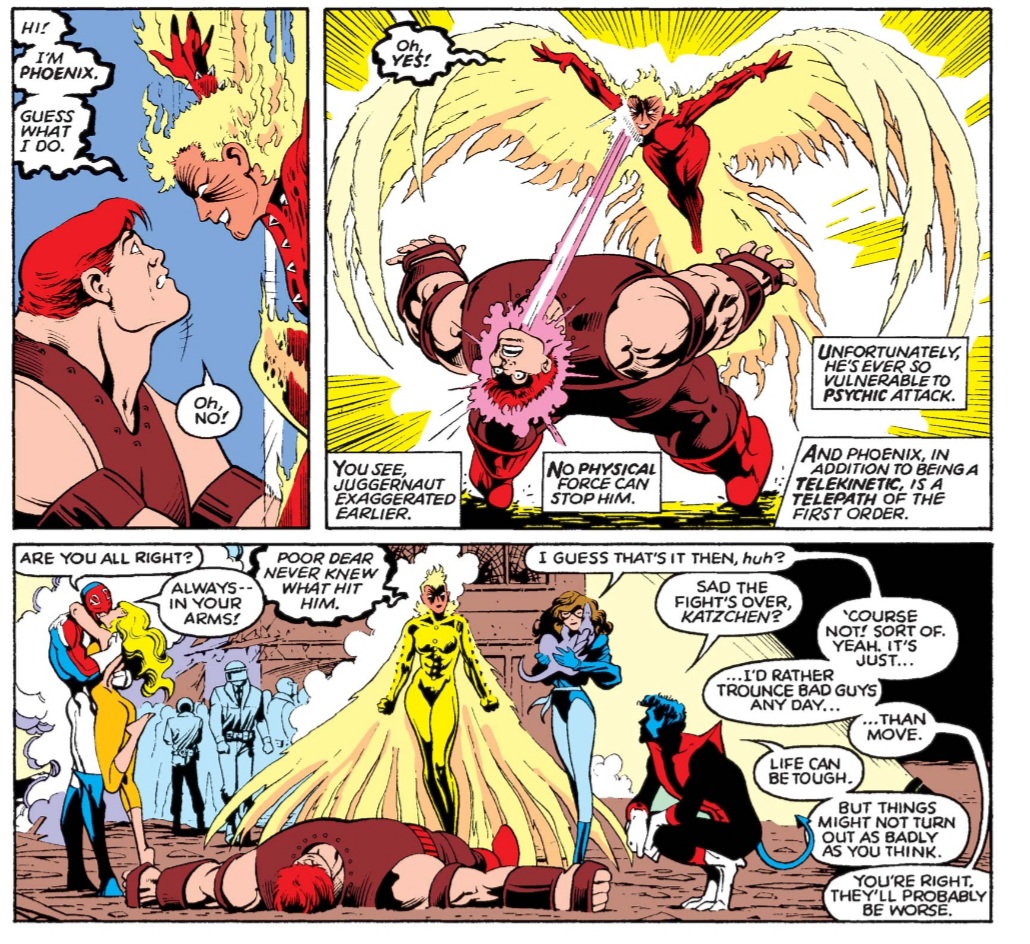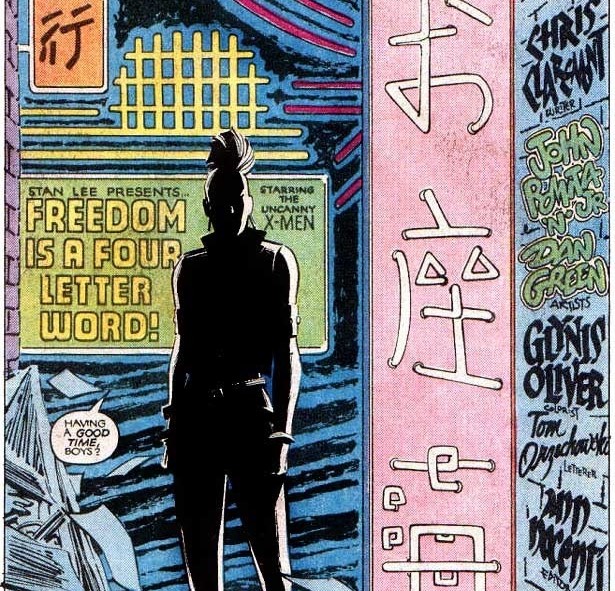While Claremont’s “method writing” approach is well-known and well-discussed, his partner on Excalibur, Alan Davis, is on record in interview as taking a similar approach to his figure drawing, offering an explanation to the enduring poignancy of their collaboration. #xmen 1/5 

“One of the things that I do with any group of characters that I work on is try to get under the skin of every character so that I become so familiar with him or her, that they actually exist in my head when I’m drawing them – so that I’m not drawing just stock figures.” 2/5 

This intuitive approach lends itself to a certain naturalness of figure, posture, and expression – one that is only possible with a pre-existing mastery over structural method. The result is characters who speak volumes even when silent, even when standing in the background. 3/5 

Pairing this with Claremont’s equally intuitive approach to character voice and consistency may be key to Excalibur’s enduring appeal, despite not really having any iconic storylines (other than Cross-Time Caper, which is very large and somewhat unstructured). 4/5 

Instead, readers of Excalibur got a master-class on characterization at both the visual and textual level – a group of supernatural beings (elf, fay, cosmic goddess, Merlin’s champion….and a plucky teen) brought to life with subtlety and nuance beyond all expectation. 5/5 

Sidenote: as evidence of Davis’s achieved complexity, all the images in this thread – encompassing a wide range of characters, contexts, and emotions – came from just a single (incredibly well-drawn) issue: Excalibur #3. 

• • •
Missing some Tweet in this thread? You can try to
force a refresh






















